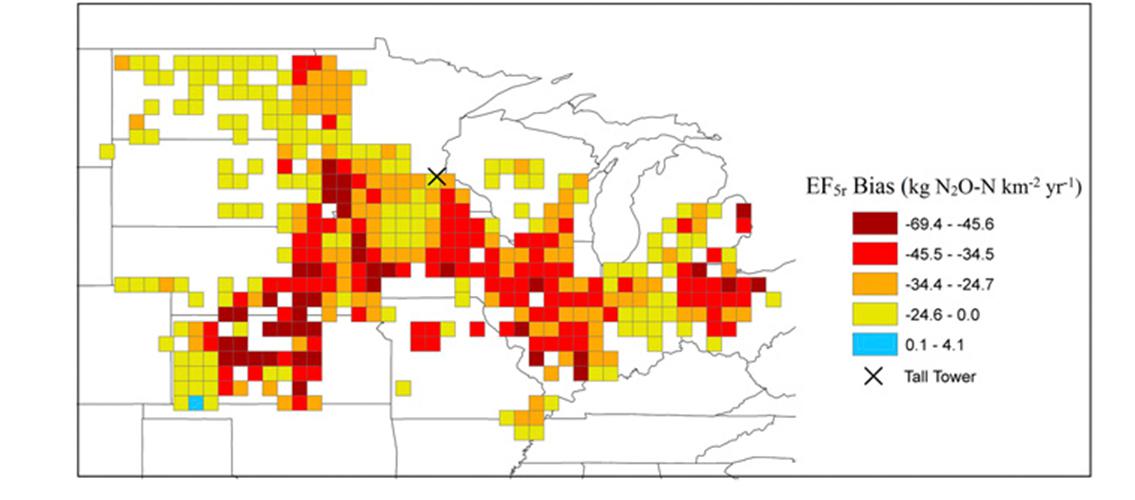
Nitrous oxide, N2O, is an important greenhouse gas and stratrospheric ozone depleting substance. The bulk of N2O emissions come from agricultural lands and associated waterways that receive agricultural runoff. Experts use an emission factor (EF) to approximate annual N2O emissions for different areas. From the EPA website, the EF is “a representative value that attempts to relate the quantity of a pollutant released to the atmosphere with an activity associated with the release of that pollutant” (www.epa.gov, visited 7/30/15). This information is used for a number of purposes, including mitigation strategies and measuring the results of those methods, so it is important to have EFs that are as accurate as possible.
MSI Principal Investigator Tim Griffis (a professor in the Department of Soil, Water, and Climate) and his colleagues have published research that shows that N2O emissions may have been greatly underestimated. They used a top-down approach, using observations from tall towers, and compared those results to the commonly used bottom-up measurements and EFs proposed by the Intergovernmental Panel on Climate Change. The differences were significant, with bottom-up estimates being considerably lower. In southern Minnesota, the previous estimation was up to nine times lower than this study’s measurements, resulting in 40% underestimation of the EF.
These results will be useful for figuring out ways to reduce nitrous oxide emissions. The article has been published in the Proceedings of the National Academy of Sciences of the USA (PA Turner, TJ Griffis, X Lee, JM Baker, RT Venterea, and JD Wood. 2015. Indirect nitrous oxide emissions from streams within the US Corn Belt scale with stream order. Proceedings of the National Academy of Sciences of the USA. DOI: 10.1073/pnas.1503598112. (Published online before print.) Other articles about this research, which could have implications for Minnesota agriculture, appeared in various media outlets:
Professor Griffis and his research group use MSI to run atmospheric models related to studies of N2O concentration in the atmosphere, as well as other projects.
Image Description: The first-order default EF5r underestimation from the Corn Belt region. The bias is defined as the difference between Intergovernmental Panel on Climate Change (IPCC) EF5r emissions and the results from stream order scaling. (EF5r = IPCC’s EF for leaching and runoff in rivers.) Image and description from PA Turner, et al, PNAS, 2015, DOI: 10.1073/pnas.1503598112 (online publication ahead of print).
posted on August 20, 2015